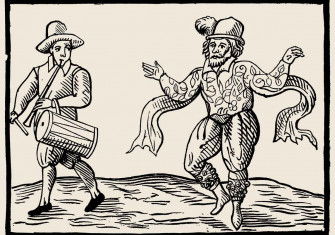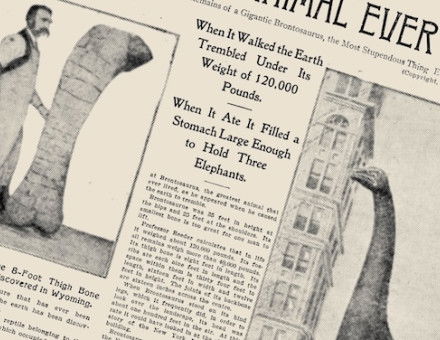Fool by Peter K. Andersson review
Fool: In Search of Henry VIII’s Closest Man by Peter K. Andersson is the first full length study of William Somer’s life and posthumous mythos.
Was there anything, aside from consanguinity, that united the Tudor dynasty as it lurched back and forth from Catholicism to Protestantism across the middle decades of the 16th century? One answer to that question, surprisingly, was a man named William Somer, Henry VIII’s last and best-loved fool. It is not simply because surviving court accounts reveal the cares taken on Somer’s behalf by succeeding monarchs. It is also because, remarkably, he appears in five portraits with them – all but one family groupings – across four reigns. One portrait might be an anomaly; five over 50 years surely represents a statement.
As Peter K. Andersson writes in Fool: In Search of Henry VIII’s Closest Man, the first full length study of Somer’s life and posthumous mythos, Somer appears to have been ‘a good luck charm for the Tudor dynasty’. But his presence in the paintings still raises more questions than it answers.
Somer first appears on the record on 28 June 1535 in an entry in the royal wardrobe accounts for two doublets, two coats and a cap. Andersson is sceptical of later stories of Somer amusing Henry VIII for hours with improvised verse, but the two must nevertheless have spent considerable time at close quarters. Any reader expecting insight into the dynamic between fool and king is likely to be disappointed, however. ‘Henry VIII’s closest man on a purely geographic level, perhaps, but apparently seldom regarded’, is Andersson’s summary of their relationship.
The earliest portrait is the most interesting in this context. It is in a psalter commissioned by Henry in 1540. The two men are alone in a small room. Henry is in the background to the left, seated, playing a Welsh harp. Somer is in the foreground, to the right, standing with his back to his master. A door to a garden is open behind his left shoulder. Somer seems anxious; a pensive, frowning look is characteristic in every image of him, in fact. His hands are clasped together in a gesture that is somewhere between pleading and prayer.
Andersson argues that this is ‘not an image of intimacy or warm feelings of any kind’. It is a complex image, to be sure; but this feels like a misreading. It is powerfully intimate; the fact that this was Henry’s own psalter makes it doubly so. Part of the intensity of the image comes from a kind of discordance that is in some senses political but also, in context, moral: there is a relationship between king and fool in the picture that is not wholly that of king and subject. It speaks directly to the problems we have in understanding who and what fools were and what their role was. Andersson pushes back against Yi-Fu Tuan’s theory that Renaissance fools were ‘treated and viewed as human pets’; but he is nevertheless attracted to the idea that ‘the keeping of fools represented a search for authenticity’. Hence, ‘the fool as a sort of mascot or charm’.
But Somer was clearly more than that. Andersson cites three mid-century letters, all of which remember, with slight variations, Somer saying that ‘he would abide by no saying of his’ – that is, he told people not to trust his word. All three references are warm, but the last, from the diplomat Nicholas Wotton in 1554, is conspicuously affectionate: Wotton refers to him as ‘my fellow Will Somer’ and adds, in parenthesis: ‘God keep him warm, wheresoever he may be!’ Andersson’s assessment of these references, that Somer ultimately can be ‘credited with little more than the use of the word “abide”’ seems particularly reductive; it reflects a general tendency to constrain the possible interpretations of Somer himself and how others interacted with him.
This may be a problem that derives from the structure of the book. Andersson begins with posthumous myth, as found in the anonymous 1637 jest book A Pleasant History of the Life and Death of Will Summers, for example. (The revised name was probably the work of Thomas Nashe for his 1592 play Summer’s Last Will and Testament, in which the ghost of ‘Will Summers’ comments on the action.) From there Andersson works backwards, circling the evidence until he arrives back at the man himself.
The approach has much to recommend it, not least because our idea of the fool is indelibly shaped by those in Shakespeare, and in particular the fool in King Lear. Shakespeare wrote that part for Robert Armin, who also originated the roles of Feste and Touchstone. Armin wasn’t merely an actor, however; his book Foole Upon Foole (1600) studied the lives and natures of six fools, Somer among them.
There is a lot for Andersson to sift, then, and he does it judiciously. But the early-modern understanding of fools, itself emerging from a more distant and indistinct medieval mentality, is elusive and difficult for us to comprehend; it requires a degree of imaginative reconstruction that is hampered by a narrative framework predicated on narrowing down lines of enquiry.
For Andersson, Somer is a ‘sort of human conversation piece’, a man incapable of intentionally saying anything perceptive or witty. ‘The humour and wisdom always relied on a third party who identified it’, he writes. But Somer seems to have been more like a living proverbial figure, a parable engine; it is as if interpreting him were a form of divination. Andersson shows how Somer’s words – even where apocryphal – were used by others to make political points. Such points could only have been made in a culture in which the words of fools carried god-given weight.
Fool is a slender book, but it is not a slight one, and it will certainly be read with great interest, particularly by those interested in the histories of disability, mental health and humour. Andersson has given us a vivid, tantalising portrait of the man himself and a nuanced exploration of how he and those around him negotiated one another. If it is not quite the definitive study it might have been, Fool has surely set the terms for future scholarship. Will Somer’s ghost has life in it yet.
Fool: In Search of Henry VIII’s Closest Man
Peter K. Andersson
Princeton University Press, 224pp, £22
Buy from bookshop.org (affiliate link)
Mathew Lyons writes the ‘Months Past’ column for History Today.






